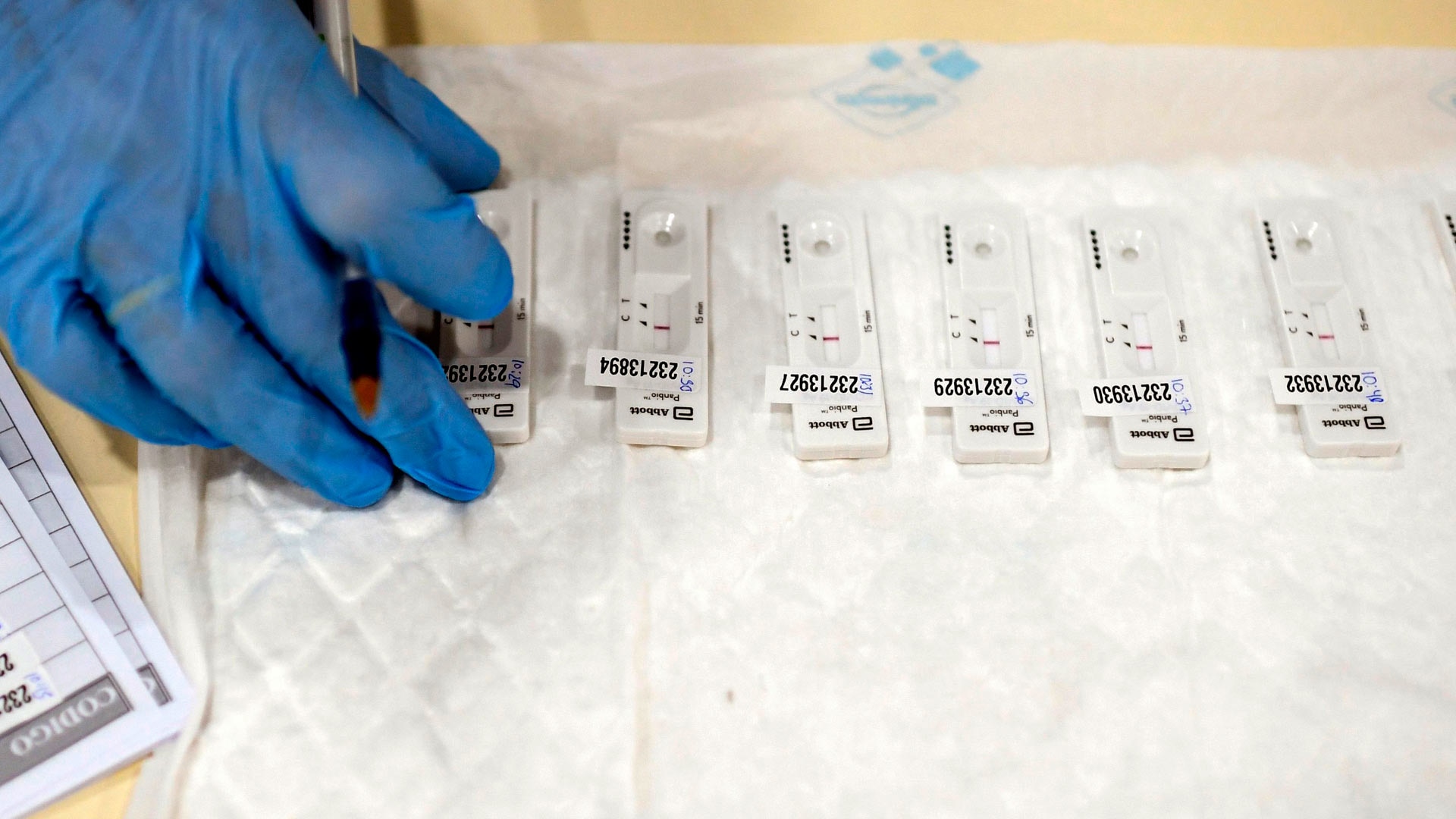

The 95 percent confidence intervals were 40.2 to 74.1 percent. The researchers found that people without COVID-19 symptoms correctly tested positive in 58.1 percent of rapid tests. Accuracy for people without COVID-19 symptoms The 95 percent confidence intervals were 63.7 to 79 percent, meaning that the researchers were 95 percent confident that the average fell between these two values. Accuracy for people with COVID-19 symptomsįor people with symptoms of COVID-19, the tests correctly gave a positive result an average of 72 percent of the time. The researchers found that the accuracy of the tests varied considerably. Chances of a rapid test giving a false negativeĪ March 2021 review of studies examined the results of 64 test accuracy studies evaluating commercially produced rapid antigen or molecular tests. The researchers found tests taken 3 days after symptoms appeared were almost as accurate as tests taken the day symptoms started. When taken within 3 days of symptom onset, home tests correctly identified 96.2 of COVID-19 cases. Within days 0 to 12 of symptom onset, the home tests correctly identified 78.9 percent of people who did have the virus and correctly identified 97.1 percent of people who didn’t have the virus. In an August 2021 study, researchers compared the validity of home antigen tests compared to PCR lab tests for detecting COVID-19 infection.

Like other antigen COVID-19 tests, home COVID-19 tests have a higher chance of a false negative than a false positive - meaning it’s more likely that the test will indicate you don’t have COVID-19 when you do have it than report you do have it when you don’t.

Rapid tests come with a high risk of giving a false negative result.Ī false negative means the test shows you don’t have COVID-19 when you do actually have it.Īt-home tests aren’t as accurate as gold standard PCR tests, but they still play a role in catching COVID-19 cases that otherwise would have gone undetected. Your sample is then usually applied to a strip that changes color if you test positive for COVID-19.Īlthough these tests provide quick results, they aren’t as accurate as laboratory tests because they require more of the virus in your sample to report a positive result.
#RAPOD COVID TEST PROFESSIONAL#
Rapid tests, also called point-of-care tests, can be performed at:ĭuring the test, you or a medical professional will insert a cotton swab into your nose, throat, or both to collect mucus and cells. However, the CDC stopped using the term “rapid” to describe antigen tests, because the FDA has also approved laboratory-based antigen tests. Most rapid tests are antigen tests, and sometimes the two terms are used interchangeably. Rapid COVID-19 tests often provide results within minutes and don’t need to be analyzed in a laboratory by a specialist. Keep reading to learn how accurate rapid tests are and when they’re used instead of PCR tests.

They usually take the form of antigen tests.Īlthough rapid tests can provide quick results, they aren’t as accurate as PCR tests analyzed in a lab. Rapid tests are COVID-19 tests that can provide results in as little as 15 minutes and don’t require lab analysis. These tests help diagnose COVID-19 by searching for certain molecules found on the surface of the SARS-CoV-2 virus. PCR tests are considered the gold standard for diagnosis by the Centers for Disease Control and Prevention (CDC). A PCR test can help diagnose COVID-19 by detecting the genetic material of the coronavirus. The first type is a polymerase chain reaction (PCR) test, also called a diagnostic test or molecular test. Two types of tests are commonly used to identify a current infection of SARS-CoV-2, the coronavirus that causes COVID-19. COVID-19 is a respiratory disease that can cause severe illness, especially in people with preexisting health conditions like diabetes, obesity, or high blood pressure.


 0 kommentar(er)
0 kommentar(er)
